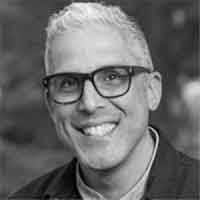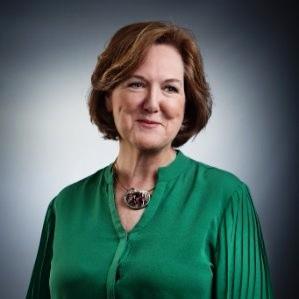National Suicide Prevention Month Advocacy Guide
Counseling Schools Search
When you click on a sponsoring school or program advertised on our site, or fill out a form to request information from a sponsoring school, we may earn a commission. View our advertising disclosure for more details.
September is National Suicide Prevention Month, and National Suicide Prevention Week is September 4-10, 2022. The American Association of Suicidology focuses on suicide prevention 365 days a year by building awareness, funding research, developing new and innovative treatment tools, being kind, and helping to educate others on resources and warning signs.
Suicide has plagued humankind since early times. According to the Historical Analysis of Suicide published in the Journal of Translational Genetics and Genomics, the diagnosis and treatment of suicide and mood disorders go back by more than 2,000 years to 460-377 BC.
The American Foundation for Suicide Prevention reports that suicide was the 12th leading cause of death in America in 2020, with 45,979 deaths. That number decreased from being the 1oth leading cause of death with 47,511 deaths in 2019. The rationale for this drop in number is not clear.
While this decrease appears very promising, some areas in the U.S. report higher rates, which may be attributed to vulnerable populations, access to services, and other factors. Continued study of this trend is warranted, and the pandemic’s long-term effects are unknown.
“Early in the pandemic, politicians were speculating that suicide deaths would increase,” says Jonathan B. Singer, PhD, LCSW. “Many suicidologists, including me, are on record as saying that it was possible that we would see an increase in suicide deaths because of many of the risk factors for suicide increased.”
According to Dr. Singer, these risks include firearm purchases, domestic violence, substance use, unemployment, and chronic illness. But as he and other suicidologists acknowledged, historical trends have shown that suicides often decrease during the early phases of a disaster or catastrophe.
“We also noted that there were protective factors such as eviction moratoriums, unemployment support, and greater access to mental health services via telehealth,” continues Dr. Singer. “The best story we can tell is that the national trend of decreased suicide deaths appears to have continued between 2019 and 2020.”
Dr. Larry Wright, center director for Forefront Suicide Prevention at the University of Washington School of Social Work, notes that even in 2022, it is hard to tell the effects of the pandemic: “What we’re seeing is a long-term effect, where people are still in the middle of it, and we are probably going to see suicides increase over time,” he says. “Suicide is still a challenge that seems to be growing, not lessening.”
Dr. Singer does highlight some recent data to note:
- Suicide attempts have increased for adolescent girls but not boys
- Suicide deaths have increased for Black Americans (e.g., in Baltimore and Chicago) but not for white Americans
Meet the Experts

Jonathan Singer, LCSW, PhD
Dr. Jonathan B. Singer is a clinical social worker, researcher, and associate professor of social work at Loyola University Chicago. He earned his bachelor’s from Earlham College, his master’s from the University of Texas at Austin, and his PhD from the University of Pittsburgh.
Dr. Singer has dedicated his 25-year career to working with families in crisis. He has 75+ publications, including the co-authored book Suicide in Schools. He is the founder and host of the award-winning podcast series, “The Social Work Podcast.” Dr. Singer’s research on suicide and cyberbullying has been featured in Time Magazine, NPR, and other national print and radio outlets.

Larry Wright, PhD
Dr. Larry Wright is a leading expert in suicide prevention who has dedicated his career to helping others lead full and healthy lives. He is the center director for Forefront Suicide Prevention at the University of Washington School of Social Work.
Previously, as the CEO of MENTOR/the National Mentoring Partnership, Dr. Wright worked with states to close America’s mentoring gap while also serving on various boards, including those for Washington State University’s College Success Foundation. He earned his PhD in journalism and mass communication from the University of Wisconsin-Madison, his master’s of arts in mass communication, and his bachelor’s of arts in English from Washington State University.
Please note that Dr. Singer was interviewed in 2021 and Dr. Wright in 2022.
Approaches to Suicide Prevention
Suicide prevention requires a multifaceted approach: “There is no one way to go about suicide prevention,” says Dr. Wright. “However, we can begin with just the knowledge that it’s important. There’s a great deal of hesitancy to discuss suicide. People just don’t know much about it and don’t know the signs to look for.”
Much of the work that is done in suicide prevention is centered on increasing public knowledge. “When we talk about suicide prevention at the individual level, we’re talking about raising awareness,” says Dr. Wright. “We’re going into schools and into communities to talk about it. We also work with for-profit companies that want to address suicide. We come in and educate them on what suicide looks like and what they can do about it.”
Another approach to suicide prevention, according to Dr. Wright, is much simpler: “One of the things that we know about suicide is that removing the means of taking one’s own life is one of the most effective things we can do to prevent suicide,” he shares. “More than half of suicides are people taking their lives with guns. So, we promote gun locks and keeping your guns safe. For people that are in crisis, we encourage giving their guns to a trusted friend so that the guns are not in the house. We also give out prescription drug locking devices for the same reason.”
How To Get Involved With Suicide Prevention
The best way to get involved with suicide prevention is to be prepared to talk about it: “I think people are more likely to talk about a cancer diagnosis than they are likely to talk about being diagnosed with a mental health issue,” says Dr. Wright. “There’s still so much stigma associated with it. Until we get over that stigma, it is going to be very difficult to help people. It can seem very awkward to approach someone and ask, Have you thought about taking your own life? or Have you thought about suicide? However, oftentimes, that is what people need—and it’s helpful to be prepared for that.”
There are numerous organizations, such as the Center for Disease Control and the National Institute of Mental Health, where interested people can learn more.
“Start by simply being aware of the signs, what it looks like, and start thinking about what you would do if you saw the signs,” urges Dr. Wright.
Youth and Suicide in the United States
“We all talk about social distancing, but we should be talking about physical distancing instead,” shared Dr. George Everly, a psychologist who is on the faculty at John Hopkins and the John Hopkins Bloomberg School of Public Health in a blog post written by Jim McCann, founder of 1-800-Flowers.com
“Dr. Everly conveyed that although we want to avoid close contact with others from a physical distance perspective, this does not mean shrinking our social networks and sacrificing social interactions, especially those of us who may already be lonely,” wrote McCann.
The pandemic has been difficult for many, and our young people have not been immune. Social interaction has suffered loss, as has academic progress. These losses have compounded existing paralyzing pressures and anxieties many of our students face.
In his Edutopia.org article In High School, the Kids Are Not Alright, California teacher David Tow writes, “I lost my first student to suicide not long ago…I was haunted, too—I still am—by the fear of a similar tragedy among my raw-nerved and anxious students.”
While Tow’s piece was written prior to the pandemic, his perceptions and advice are accurate. Tow writes,
Based on my observations, the lives of the high school students I teach are hemmed in everywhere by social pressures and expectations: high-stakes testing, the looming shadow of college admissions, the fiercely competitive school system, the painful process of figuring out who you are, and the ubiquitous desire for peer acceptance. Add to this the unseen pressures—fractured or fragmented home lives, emotional or physical violence and abuse, struggles with substance use, legal problems, and the wide range of issues borne by the many immigrant communities across the country—and it makes for a period of unsustainable emotional distress. In recent weeks the constant pressure has meant dealing with student depression almost daily, and helping support those who I feel might be toeing the line of self-harm.
Tow’s Five Strategies for Promoting High Schoolers’’ Mental Well-being were put together with the help of mental health professionals and fellow teachers. After months of the pandemic’s effects on education, they seem more important than ever before:
- Ask “How are you doing?”—and mean it.
- Set office hours. (These can be virtual if needed.)
- Remember your Maslow [Heirarchy of Needs]…mental health trumps academic performance every time.
- Consider what matters…regarding makeup work.
- Use the professionals…teachers and all school staff (need) to get to know your on-site school psychologists or mental health counselors, or to find those very important names and numbers immediately.
Warning Signs of Suicidality
The American Association of Suicidology advocates asking a person directly if they exhibit warning signs of suicide. The following is a list of behaviors that may necessitate this action, whether or not communicated directly or outwardly:
- Threatening to hurt or kill themselves, or talking or wanting to hurt or kill themselves
- Looking for ways to kill themselves by seeking access to firearms, pills, or other means
- Talking or writing about death, dying, or suicide, when these actions are out of the ordinary
- Increased substance (alcohol or drug) use
- No reason for living; no sense of purpose in life
- Anxiety, agitation, unable to sleep or sleeping all of the time
- Feeling trapped, like there’s no way out
- Hopelessness
- Withdrawal from friends, family, and society
- Rage, uncontrolled anger, seeking revenge
- Acting reckless or engaging in risky activities, seemingly without thinking
- Dramatic mood changes
- Giving away prized possessions or seeking long-term care for pets
Resources for Survivors of Suicide Loss
Loved ones struggling with the aftermath of suicide often wondered if—and how—they could have prevented it. It is important to recognize that suicide is ultimately a personal decision. Loved ones are not to blame; however, the grief process is often intense and complex.
The American Association of Suicidology has put together several helpful resources for survivors of suicide loss, including a toolkit, a list of support groups across the country, and Beyond Surviving: Suggestions for Survivors by survivor movement pioneer Iris M. Bolton
Suicide Prevention is Everyone’s Business
Know the signs, be aware, ask questions, be kind, and seek professional help for you or for others. Learn more and get involved in advocating by checking out resources from groups like the American Association of Suicidology and the American Foundation for Suicide Prevention.
- National Suicide Prevention Lifeline: 988
- Crisis Text Line: Text HOME to 741 741


